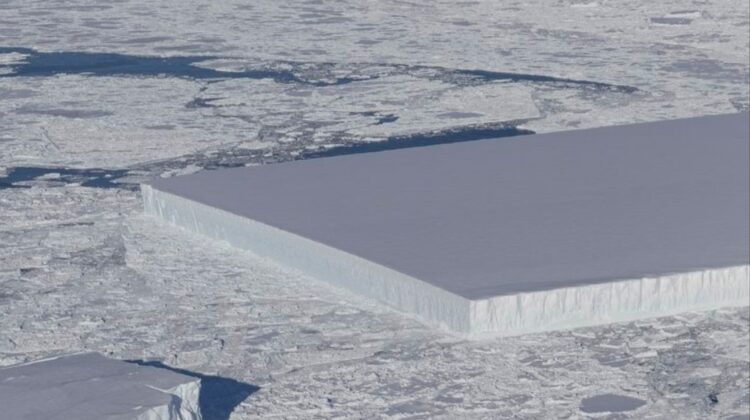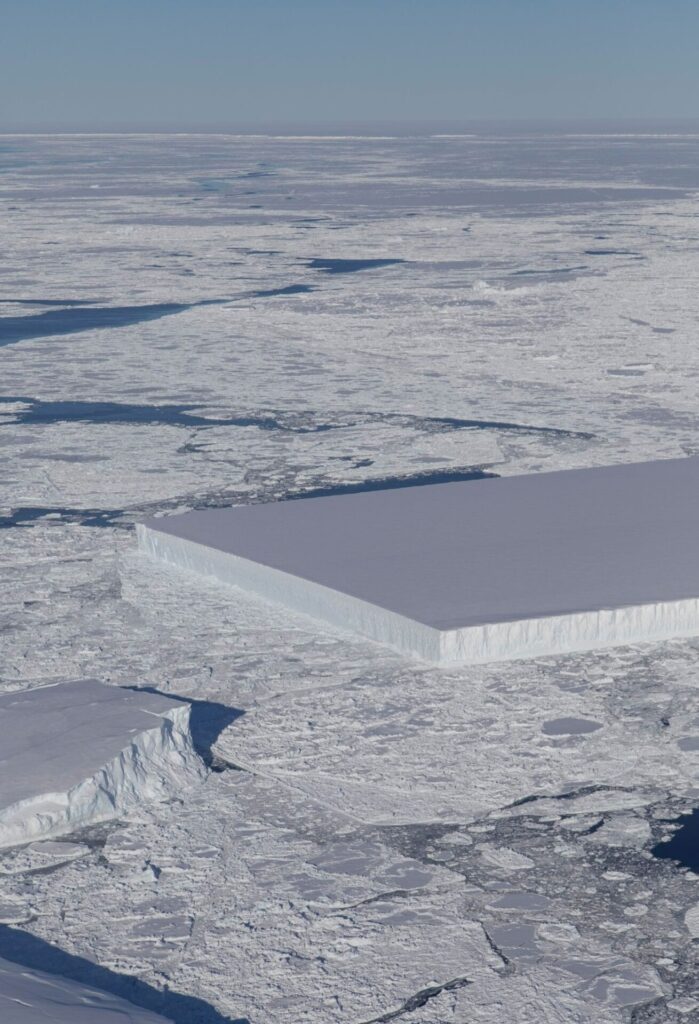
In a world where chaos often reigns supreme, a rare spectacle of order has emerged—a perfectly rectangular iceberg, defying our conventional notions of these frozen giants. Shared online by NASA, this remarkable iceberg has captivated the imagination of many, sparking curiosity and awe.
Spotted near the east coast of the Antarctic peninsula by NASA’s IceBridge aircraft during a routine survey, this iceberg stands out with its precise angles and smooth walls. According to experts, its distinct shape can be attributed to its recent calving from the Larsen C ice shelf.

Senior research scientist Ted Scambos from the University of Colorado at Boulder estimates the iceberg to be approximately 130 feet tall and several miles long. Despite its imposing size, it represents only a fraction of the vast ice formations that populate Antarctica.
Geophysicist Kristin Poinar from the University at Buffalo explains that while icebergs may appear pristine from a distance, they are often riddled with fractures and fissures. Tabular icebergs like this one are more common than one might think, especially when they break off from expansive ice shelves like Larsen C.

The immense size of Larsen C contributes to the iceberg’s rectangular shape, as rifts across the ice shelf create linear features that translate into the iceberg’s form. Eric Rignot, a research scientist at NASA’s Jet Propulsion Lab, underscores this point, noting that such rectangular bergs are characteristic of regions with large ice shelves like Larsen C.
Yet, amidst the fascination with this unique iceberg, there looms a sobering reality. The Larsen C ice shelf, like many others in Antarctica, is under threat from climate change. The collapse of Larsen A in 1995 and Larsen B in 2002 serves as a stark reminder of the vulnerability of these massive ice formations.

As temperatures rise, ice shelves become increasingly unstable, raising concerns about the future stability of Antarctica’s ice sheets. While one iceberg alone cannot predict the fate of an ice shelf, it serves as a poignant reminder of the delicate balance between nature’s forces and the impact of human-induced climate change.
In the end, as we marvel at the perfectly rectangular iceberg, let us also reflect on the broader implications of its existence—a testament to the fragility of our polar environments and the urgent need for collective action to preserve them for future generations.

Leave a Reply